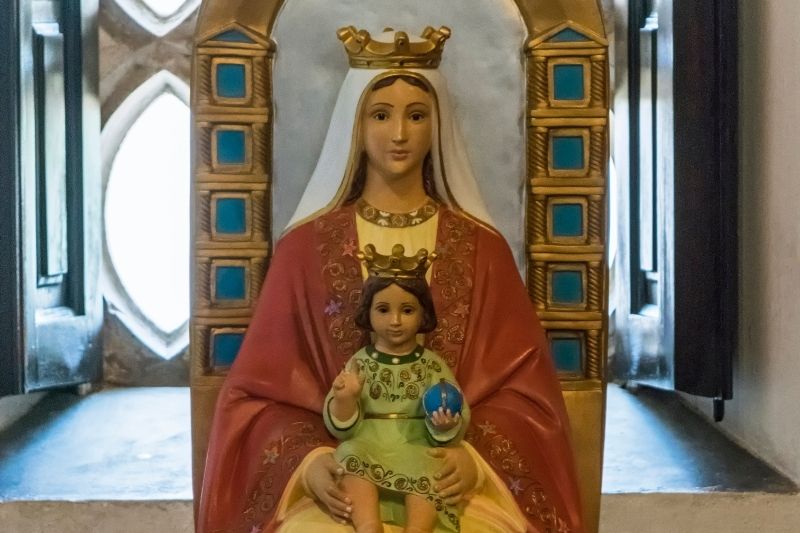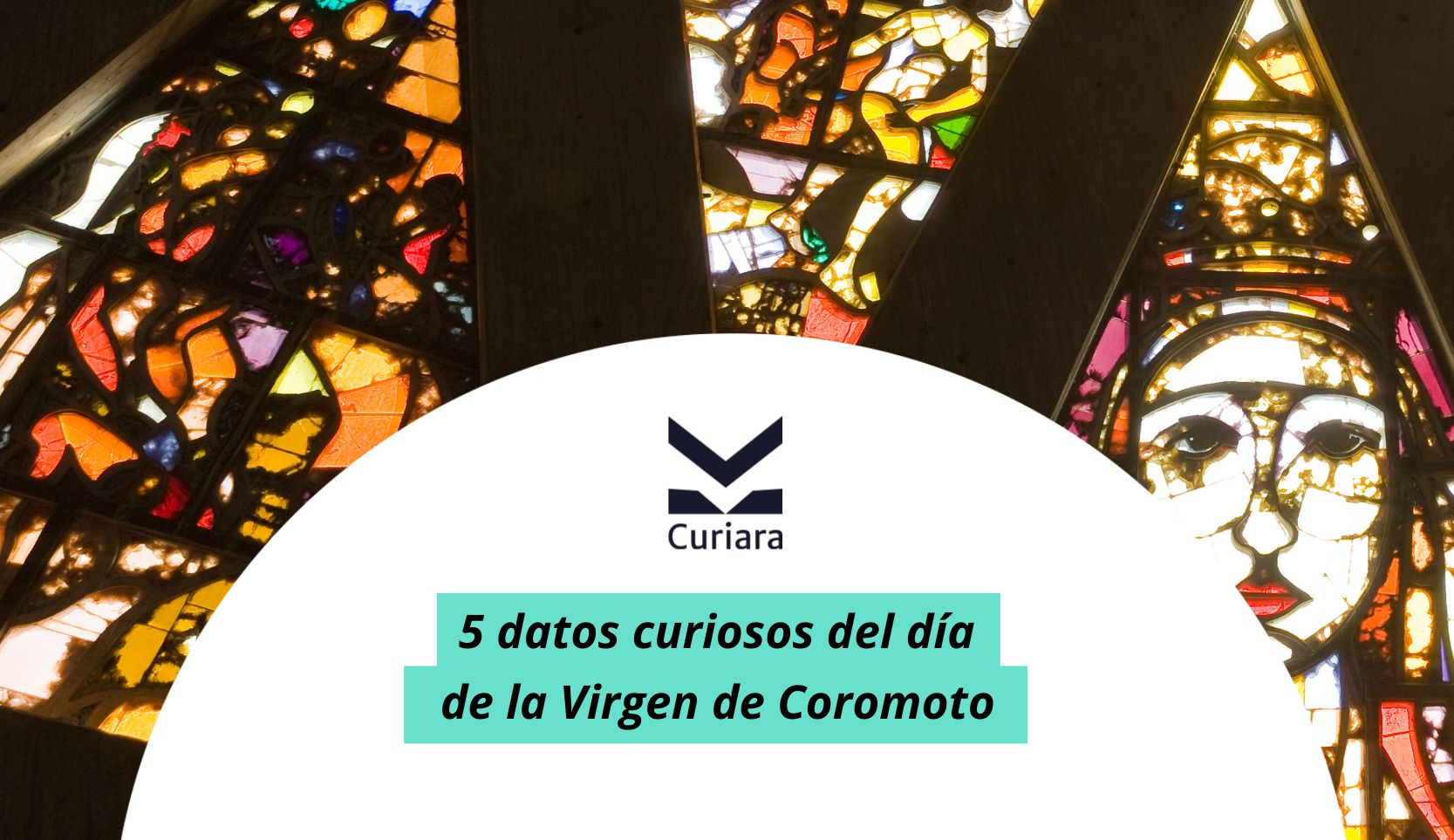The Day of the Virgin of Coromoto is a special date for all venezuelansno matter where we are.
Each September 11 we celebrate our Patrona symbol of faith, identity and hope that connects us to our roots. For those who have had to leave the country, this devotion becomes a bond that unites us with our land and traditions.
Remember the masses, processions and family prayers fills us with nostalgia, but also gives us strength to move forward. And beyond the devotion, there are many curiosities about the Virgin of Coromoto that you may not have known about.
In this article, we tell you five surprising facts about its history and impact on Venezuelan cultureJoin us on this journey of faith and tradition!
Some curiosities you didn't know about the day of the Virgin of Coromoto

The Day of the Virgin of Coromoto is full of surprising stories and details that you may not have known about. Beyond being a religious festivalThe day has a rich tradition that has been woven over the centuries, and each aspect of it has a unique deep meaning for Venezuelans.
From the apparitions of Our Lady to the spread of her devotion throughout the world.there are curiosities that connect us with our history, faith and culture.
Three special dates to celebrate the Virgin of Coromoto
The Virgin of Coromoto is so important to Venezuelans that it has not just one day of celebration, but three! Each of these dates has a special significance in its history and reminds us of different key moments of his devotion in the country.
February 2: The entrance of his image to Guanare (1654)
This date commemorates the day on which the image of the Virgin officially arrived in Guanarewhere she was welcomed with great devotion by the inhabitants. Since then, her presence has been a symbol of faith and protection for the people.
Traditionally, on this date, processions and masses are held in his honor, especially on the National Sanctuary of the Virgin of Coromoto.
September 8: The first apparition to Cacique Coromoto (1652)
This day marks the moment when the Virgin appeared for the first time to the cacique Coromoto and his wifeasking them to receive the baptism and to embrace the Christian faith..
At Venezuelamany churches celebrate this date with special Eucharists, prayers and processions. In addition, in GuanareThousands of pilgrims visit her shrine to pay homage to her.
September 11: His canonical coronation (1952)
This is the day when the Catholic Church officially recognized the Virgin of Coromoto as the Patroness of Venezuela and its canonical coronation.
Throughout the country, this date is celebrated with solemn masses, religious festivities and tributes to the Virgin. For Venezuelans living abroad, it is an opportunity to come together as a community and continue to keep the devotion aliveeven if it is far from home.
Each of these dates is an opportunity to remembering our roots and keeping our faith aliveno matter where we are. For many venezuelans abroadFollowing these celebrations is a way to feel closer to their land and their people.
The two apparitions of the Virgin of Coromoto
One of the most fascinating aspects of the Day of the Virgin of Coromoto is the story of his appearances. It was not a single encounter, but two key moments that marked his legacy in Venezuela.
The first appearance occurred on September 8, 1652when the Virgin was presented to the cacique Coromoto and his wife en a road near Guanare. At that time, the Spanish colonists wanted to evangelize the Indians, but many resisted, including the cacique.
However, the Virgin she appeared to them surrounded by light and with a breathtaking beauty. She asked them to to receive baptism and embrace the Christian faith. The cacique, surprised, accepted the missionaries' invitation and took his people to the church.
But the story doesn't end there. A year later, the Virgin appeared again, this time inside the shack of the cacique Coromoto. Enstead of accepting her message, the cacique was filled with fury and tried to trap her, but the Virgin disappearedleaving in your hands a small image printed on a piece of cloth.
This image is the one we venerate today and is considered a miracle in itself. Since then, the devotion to the Virgin of Coromoto grew throughout the country and its history became an essential part of our Venezuelan identity.
The Sanctuary of the Virgen de Coromoto
This sanctuary, located in Guanarein the state Portuguese, is of great historical and cultural importance for Venezuela.
Inside, the Minor Basilica is impressive, with a architecture that combines classical and modern elements. It is a place where thousands of pilgrims have gathered over the centuries for to pay homage to Our Lady and receive her protection and blessings..
In addition, the church houses the ioriginal picture of the Virgin of Coromotowhich was blessed by the Pope Pius XII in 1954. This image, which measures only a few centimeters, is small, but its power and symbolism are enormous for all Venezuelans.
The sanctuary is also known for its large squarewhich is filled with the faithful every year. September 11during the celebrations in honor of the Virgin. The majesty of the building, surrounded by a atmosphere of peace and devotion, makes visitors feel closer to their faith and their country.
The curious thing is that, although the original image is smallThe devotion he awakens is immense. It is said that in his appearance at the cacique Coromoto, the Virgin gave him the image of herself as a sign of their protectionSince then, this image has been venerated throughout the country.
Today, the sanctuary continues to be an important meeting place and prayerfor Venezuelans living in the country as well as for those abroad, who keep the faith and tradition alive through virtual masses and events in Venezuelan communities around the world.
This sanctuary is not only a place of faith, but also a symbol of resistance and unity for all Venezuelans, reminding us that, even if we are far from home, our culture and traditions will always be with us.
International veneration
Although the Virgin of Coromoto is deeply revered in VenezuelaIn the last few years, her devotion has crossed borders and has reached several countries, where thousands of Venezuelans continue to celebrate their faith.
Countries such as Colombia, Peru, Chile, Argentina, Argentina, Costa Rica and Spain are witnesses to how this devotion has grown among the Venezuelan community who, although far from their homeland, continue to keep their religious traditions alive.
For example, in Chilethe Venezuelan community celebrates the Day of the Virgin of Coromoto with masses and processions, where devotion is mixed with nostalgia for the homeland.
In some cities, such as Santiagoevents are organized, including songs and prayers, where all Venezuelans come together for to pay homage to its Patron Saintreinforcing the Venezuelan identity abroad.
At Argentinaespecially in Buenos Airesthe community also gathers in large numbers for celebrate the Virgin.
These festivities are very much more than just a religious celebration. For those of us who live outside the country, these are opportunities to feel connected to our roots.
The devotion to the Virgin of Coromoto becomes a meeting point, not only of faith, but also of identity. It is a way of to keep traditions alive and to strengthen the ties between those who have had to emigrate.
Uniting Venezuelans abroad

The Day of the Virgin of Coromoto is a celebration that not only connects us with our faith, but also strengthens ties among Venezuelanswherever we are.
Although the distance separates us from our homeland, the traditions, festivities and devotion to our patron saint. remind us that we always carry Venezuela in the heart.
At CuriaraWe understand perfectly what it means to be far away, but still want to be present in the lives of our loved ones. That is why, more than a app to send remittances to VenezuelaWe are a bridge between those who have had to leave the country and those left behind.
Helping, supporting and being closeeven from a distance, it is our way of continuing to feel part of our land, of to keep alive the culture and traditions that define us as Venezuelans.
As well as the devotion to the Virgin of Coromoto unites us, in Curiara We also want to be part of that union by offering a constant and close support so that, even though we are far away, we never stop feeling that we are connected to our people, our faith and our roots.
